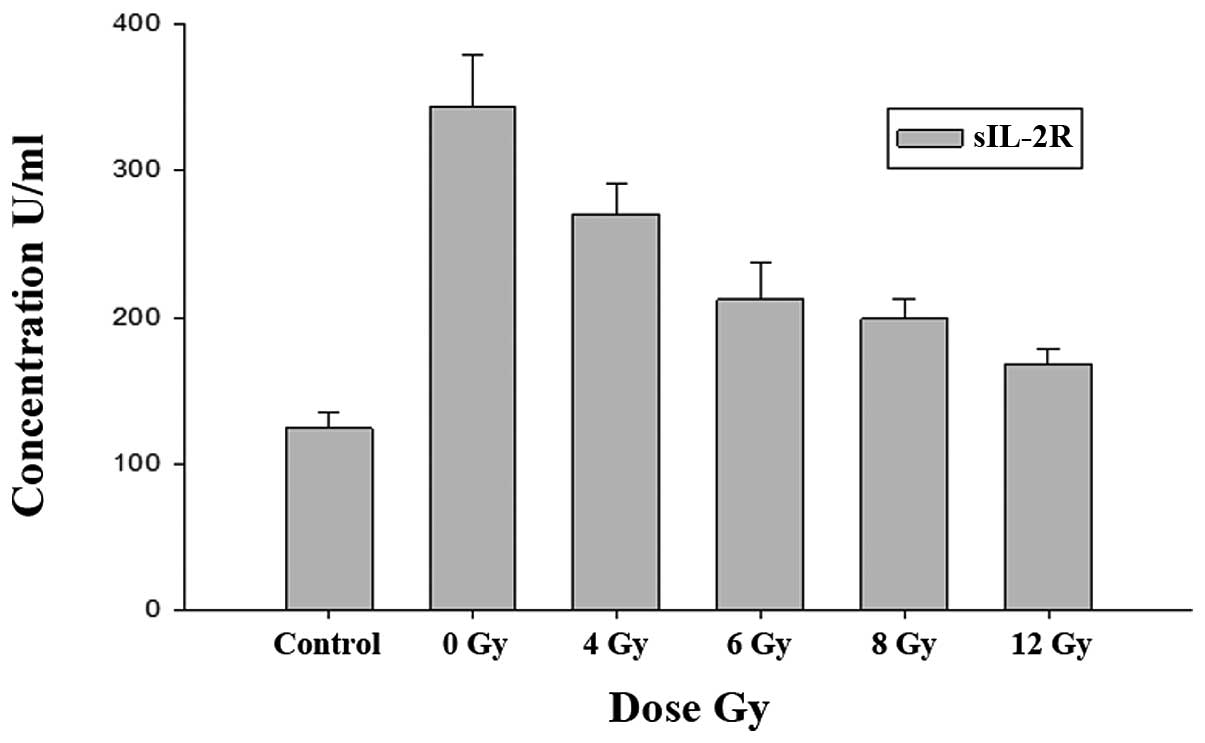Effect of heavy‑ion beam irradiation on the level of serum soluble interleukin‑2 receptors in hamster cheek pouch carcinoma model
- Authors:
- Published online on: February 17, 2014 https://doi.org/10.3892/br.2014.238
- Pages: 408-411
Metrics:
Total
Views: 0 (Spandidos Publications: | PMC Statistics:
)
Total PDF Downloads: 0 (Spandidos Publications: | PMC Statistics:
)
Abstract
Soluble interleukin‑2 receptor (sIL‑2R) is a glycoprotein derived from α chain of interleukin 2 receptors of mononuclear as well as T‑cell membranes. The aims of this study were to detect the changes of serum soluble interleukin‑2 receptor (sIL‑2R) levels following heavy‑ion beam irradiation in the hamster model with cheek pouch carcinoma, as well as to examine the impact of immune status of the hamster cheek pouch carcinoma model using heavy‑ion beam irradiation. sIL‑2R serum levels were detected by radioimmunoassay (RIA) in 40 hamsters bearing cheek pouch carcinoma prior to and following exposure to heavy‑ion beam irradiation, and 8 normal animals served as the control. The sIL‑2R serum level in hamster cheek pouch carcinoma model was significantly increased as compared to the normal control group (P<0.05). Results showed that an increase in the irradiation dose led to a gradual decrease in the sIL‑2R serum level. Additionally, a statistical significance was observed compared to the tumor group (P<0.05). In conclusion, alterations in serum sIL‑2R expression have an effect on the hamsters cheek pouch carcinoma model subsequent to heavy‑ion beam irradiation. An increase in the irradiation dose indicated a decreased tendency in serum sIL‑2R content. Detection of serum level changes may lead to an improved understanding of heavy‑ion irradiation in vivo immune status, which is crucial for clinical diagnosis and prognosis. It can also provide a sensitive indicator to help estimate the effects of heavy‑ion cancer targets.











